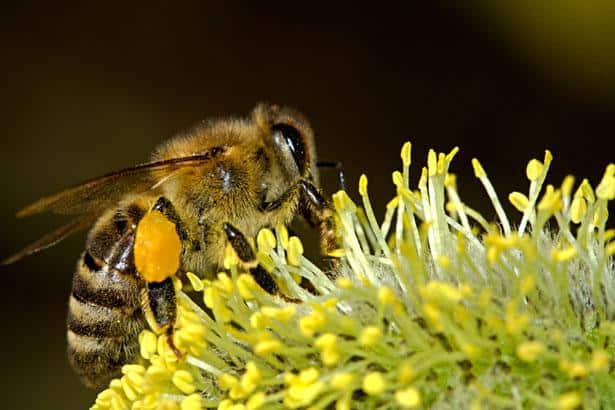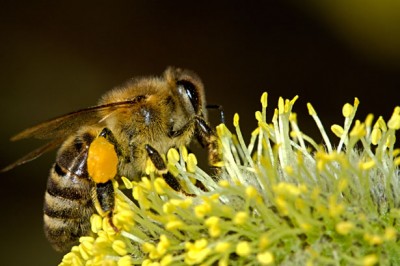European scientists say they have discovered the problem behind the declining honeybee population, and pesticides seem to be the culprit.
The study by the journal Ecology Letters states that “extended periods of stress” can cause the failure of a bee colony. Scientists at the University of London believe that when bees are exposed to even low levels of neonicotinoids, behavioral changes occur and work inside the colony ceases. As previously reported by Off The Grid News, neonicotinoids are one of the primary chemical ingredients in Monsanto agricultural products.
The bee colony collapse study also revealed that exposure to chemical pesticides like neonicotinoids in crop fields impact individual bees. The exposure to popular chemical herbicides and pesticides like Monsanto manufactures by even a single bee can cause a honeybee colony to fail.
Lead scientist John Bryden said:
“One in three mouthfuls of our food depend on bee pollination. By understanding the complex way in which colonies fail and die, we’ve made a crucial step in being able to link bee declines to pesticides and other factors, such as habitat loss and disease which can all contribute to colony failure. Exposing bees to pesticides is a bit like adding more and more weight on someone’s shoulders. A person can keep walking normally under a bit of weight, but when it gets too much – they collapse. Similarly, bee colonies can keep growing when bees aren’t too stressed, but if stress levels get too high the colony will eventually fail.”
Fellow study author Vincent Jansen noted that the research project also provided significant insights into the biological process of the little pollinators. Jansen also added that the researchers found the manner in which bees work together is intriguing and that the failure of the insects to work together can also contribute to colony failure and the decline of the hive.
The Ultimate Guide to Keeping Stronger Colonies and Healthier, More Productive Bees
The research was funded as part of the “Insect Pollinators Initiative.”
“Pesticides can have a detrimental effect on bees at levels used in the field,” said co-author Nigel Raine. “Our research will provide important evidence for policymakers. The way we test pesticides, the way we assess their impact on bees, and the way we manage pesticides can all be improved.”
Meanwhile, a separate study, published by the Xerces Society, appears to support the scientists. The study is titled “A Review of Research into the Effects of Neonicotinoids Insecticides on Bees.”
An excerpt from the chemical pesticides study reads:
“A possible link between neonicotinoids and honey bee die-offs has led to controversy across the United States and Europe. Beekeepers and environmentalists have expressed growing concern about the impact of neonicotinoids, concern based on the fact that neonicotinoids are absorbed into plant tissue and can be present in pollen and nectar, making them toxic to pollinators.”
Among the key findings:
- Residue from the chemical have been found in nectar and pollen consumed by butterflies and honeybees. In some cases, the neonicotinoid levels reached lethal proportions.
- Measurable amounts on neonicotinoid residues were found in “woody plants” approximately six years after the chemicals had been applied. A single application can reportedly remain in the soil for months or even years.
- Plants and crops not treated with the chemical can still absorb neonicotinoids left in the soil from a prior year.
- Chemical products which contain neonicotinoids and are designed for home use in lawns and gardens reportedly possess manufacturer application recommendations more than 120 times higher than the rates suggested for the agriculture industry.











